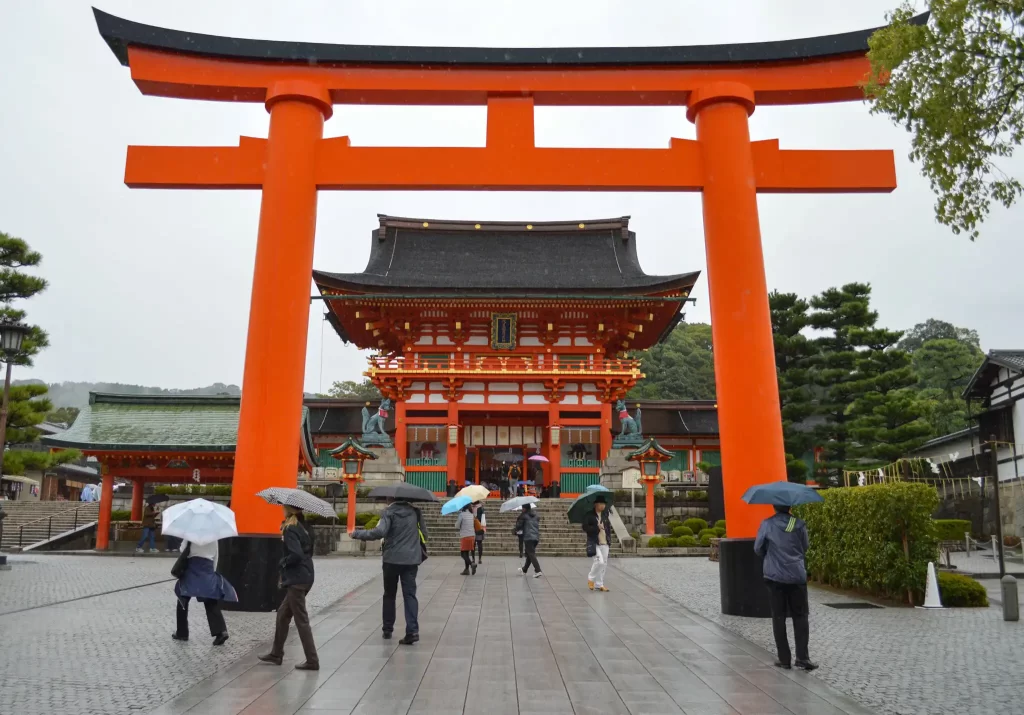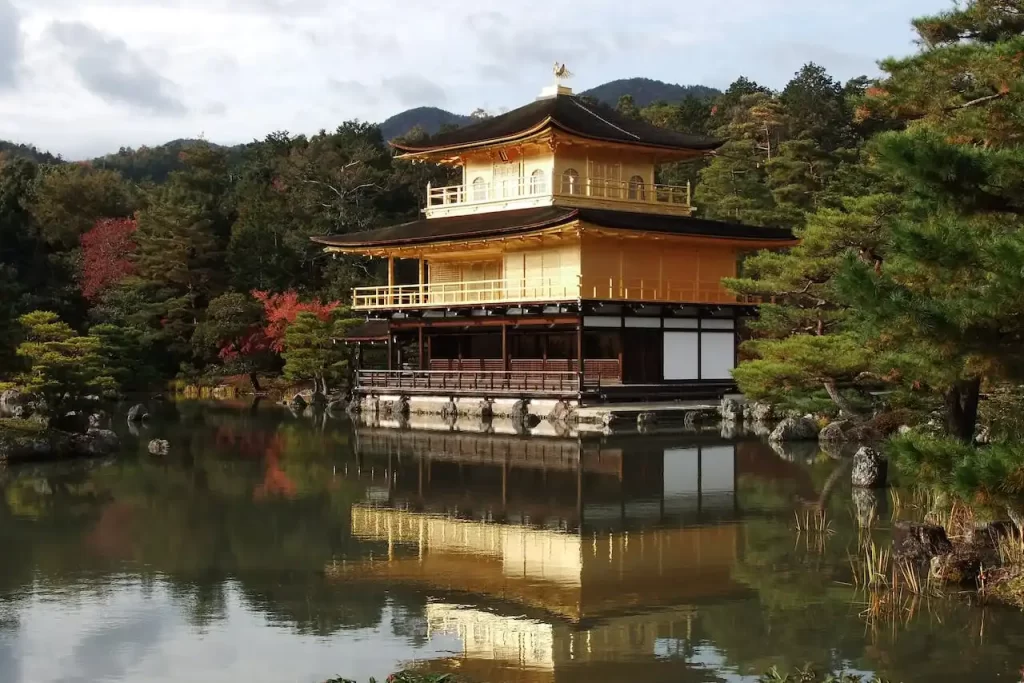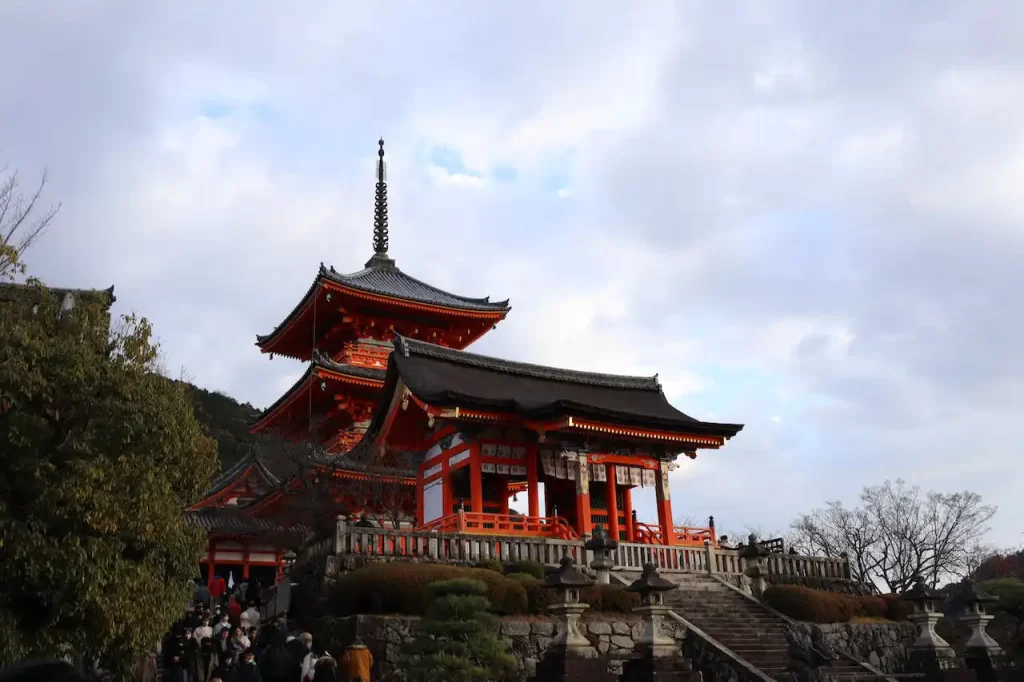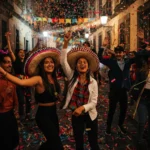Kyoto, Japan’s former imperial capital, is a city where traditional culture and history are vividly alive. Encircled by picturesque mountains, Kyoto seamlessly intertwines its illustrious past with modernity, making it a captivating destination for anyone interested in Japanese heritage.
The city’s historical charm is exemplified by Nijo Castle, a UNESCO World Heritage site that reflects the architectural grandeur of Japan’s feudal era. Its famous “nightingale floors” and tranquil gardens are a testament to ancient craftsmanship and aesthetic sensibilities. Equally mesmerizing is the Fushimi-Inari Taisha Shrine, known for its thousands of vermilion torii gates that create a stunning pathway up a mountain, offering both a spiritual journey and a connection to nature.
Kinkaku-ji, or the Golden Pavilion, stands as a symbol of Kyoto’s opulence, with its gold-leaf-covered exterior shining over a tranquil pond. Another architectural marvel, Kiyomizu-dera Temple, perched on the hills of Eastern Kyoto, offers panoramic city views and is famed for its expansive wooden stage and the sacred Otowa Waterfall.
Kyoto also boasts the culturally rich Gion district, known for its traditional wooden houses and the iconic Geisha culture. The city’s well-preserved streets, teahouses, and exquisite kaiseki cuisine add to its allure, making Kyoto a living museum that elegantly bridges Japan’s past and present.
Exploring Kyoto’s Rich Cultural Heritage
Kyoto, the heart of Japan’s cultural legacy, stands as a testament to the country’s rich history and traditions. This city, once the imperial capital of Japan, is a treasure trove of historical sites, temples, and unique cultural experiences. Here, we delve into some of the most iconic attractions that make Kyoto a must-visit destination.
Nijo Castle: A Glimpse into Japan’s Feudal Past

Nijo Castle, with its impressive architecture and historical significance, is a UNESCO World Heritage site. Built in 1603 as the residence of Tokugawa Ieyasu, the first shogun of the Edo Period, the castle is an embodiment of Japan’s feudal era. Its interiors are adorned with intricate screen paintings, and the “nightingale floors” are designed to chirp when walked upon, a security measure against intruders. The surrounding gardens, with their serene ponds and meticulously maintained flora, provide a tranquil escape from the city’s hustle.
Fushimi-Inari Taisha Shrine: A Pathway of Vermilion Torii Gates

Fushimi-Inari Taisha Shrine is renowned for its thousands of vermilion torii gates, which create a mesmerizing path through the forest. Dedicated to Inari, the Shinto god of rice and prosperity, this shrine is an iconic symbol of Kyoto. The hike through the torii gates up the mountain offers a spiritual and physical journey, with smaller shrines and fox statues, considered to be messengers of Inari, along the way.
Kinkaku-ji: The Golden Pavilion

Kinkaku-ji, or the Golden Pavilion, is a Zen Buddhist temple that is one of Kyoto’s most iconic landmarks. The top two floors of this stunning structure are completely covered in gold leaf, reflecting in the surrounding pond and creating a breathtaking view. Originally built as a retirement villa for the shogun Ashikaga Yoshimitsu in the 14th century, it was converted into a temple after his death. The pavilion is set within a beautifully landscaped garden, representing the harmonious connection between heaven and earth in Japanese culture.
Kiyomizu-dera Temple: A Panoramic View of Kyoto

Perched on the hills of Eastern Kyoto, Kiyomizu-dera Temple is famous for its wooden stage that extends from the main hall, offering panoramic views of the city. The temple, dating back to 778, is dedicated to the deity Kannon and is a UNESCO World Heritage site. Visitors often drink from the Otowa Waterfall, located at the base of the temple, which is believed to have wish-granting powers.
The Historic and Cultural Essence of Kyoto
Kyoto’s cultural essence is also reflected in its other historic sites like Sanjūsangen-dō Temple, with its 1,001 statues of Kannon, and the Kyoto Imperial Palace, the former residence of the Japanese Emperor. The city’s traditional districts, such as Gion, Higashiyama, and Pontocho, offer glimpses into Japan’s past with their preserved streetscapes and wooden machiya houses.
Frequently Asked Questions (FAQ)
Q: What is the best time to visit Kyoto? A: The best times to visit Kyoto are during the spring (March to May) for cherry blossoms and fall (October to November) for autumn foliage.
Q: Are there any unique experiences in Kyoto for tourists? A: Yes, Kyoto offers unique experiences like tea ceremonies, Geisha performances, and traditional Kaiseki dinners.
Q: How accessible are the historical sites in Kyoto? A: Most historical sites in Kyoto are accessible by public transportation, and many are within walking distance of each other.
Q: Is English widely spoken in Kyoto? A: English is not widely spoken, but key tourist spots often have signs and information in English.










